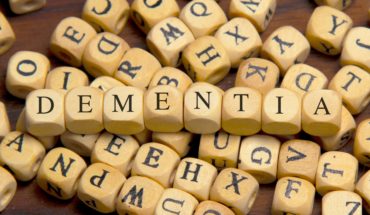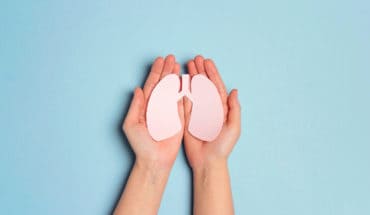Men and women of the future will be feeling the effects of age-related health problems later in life, according to the Office for National Statistics. Women of the future, on average, will have 64 years to enjoy unfettered good health, although men will have a little less time with the ‘best of health’ coming to an end by the time they reach 63.4 years.
These new predictions apply to boys and girls born between 2012 and 2014, and shows a big leap from expectations of those born 12 years earlier, between 2000 and 2002, when women could expect to reach 62.2 years in prime health whereas men could only expect to get to 60.1 years. (Last year was even better however and there has been a slight backward step.)
However, after these milestones, a growing number can expect to live with chronic health problems that are linked to old age, including the big five – heart disease, dementia, cancer, respiratory disease and arthritis.
Here, we look the likelihood of developing heart disease later life.
Coronary heart disease (CHD) is the biggest killer in the UK and can cause angina, which is pain or discomfort in the chest, heart failure, and heart attacks. The risk of developing the disease is linked to your age as well as smoking, obesity and high blood pressure because all these things put the heart under greater strain. Coronary heart disease develops due to a build up of fatty substances, such as cholesterol, in the walls of the coronary arteries which supply the heart with blood. As time goes on for some but not all people, the arteries can become narrow and stop enough oxygen-rich blood getting to the heart, damaging the heart muscle.
In 2010, the most recent year when figures are available, around 80,000 people in the UK died from coronary heart disease (CHD) according to the British Heart Foundation.
Your gender will also make a big difference to whether you develop heart disease or not and when it will occur. According to Coronary Heart Disease Statistics 2012, published by the British Heart Foundation, men aged 55 TO 64 are three times more likely to have CHD than women aged between 55-64. This is because women have enjoyed greater protection from heart disease before the menopause. However, women over the age of 50 do start to see a sharp increase in their risk. In the next decade, between, 65 and 75, they are twice as likely to have the disease. Over the age of 75, men are still one third more likely to have CHD, although the gap is narrowing. Professor John Cleland, Professor of Clinical Cardiology at Imperial College London, believes that lower levels of the circulating female hormone oestrogen, which may help to limit the accumulation of cholesterol in the arteries, may explain this. “I think that the menopause is what causes catch-up amongst women. However, trials of HRT containing synthetic oestrogen and progesterone failed to show a protective effect on the cardiovascular system; hormone replacement doesn’t appear to be as good as the real thing.’
Interestingly, UK death statistics show that older women, over the age of 75, die in the same numbers as male sufferers, even though a third more men are diagnosed with the condition at this age. The reason for this is not well understood. Some experts believe that this is because the common assumption that heart disease affects mostly men, something the figures show isn’t true. Some US studies have shown that women with heart disease are less likely to undergo procedures like angioplasty, which widens the arteries in the heart. Professor Clelland says there is no convincing evidence that women receive poorer standard of care in the UK. ‘In fact, I think women are more likely to follow medical advice such as changing their diet and taking their medications- which can be an advantage.’
Men are far more likely to die from heart disease when they are aged between between 55 and 64, with 5899 men dying from CHD compared to just 1495 women. This is thought to be because of the protective effect of oestrogen. By the next decade, women are catching up, and account for almost a third of deaths. 9952 men die from this disease compared to 4084 women between the age of 65 and 74. But by the time, women and men pass the age of 75, the death rates are equally matched at around 27,500 each in 2010.
Professor Cleland also believes that heart failure – the silent killer – can help to explain why women ‘catch up’ with men in the CHD death statistics. ‘Four out of every five deaths after a heart attack are preceded by the development of heart failure. High blood pressure can also cause heart failure. Heart failure causes or complications about 0.5 million hospital admissions in the UK each year – about 4 million bed-days and leading to an estimated 200,000 deaths each year.
This may explain lack of sex difference in CV death amongst older people. Heart failure, whatever its cause, is the real killer. Men get it predominantly through heart attacks and so slightly younger. Women get it predominantly through hypertension and are older.’
The good news, however, is the overall, death rates from CVD have been falling in the UK since the early 1970s because of improved treatments like preventative statins as well as lifestyle factors, like a decrease in smoking rates. For people under 75 years, death rates have fallen by 44 per cent in the last ten years
But this could reverse as obesity becomes more prevalent amongst the young – obesity causes the heart to work harder to pump blood around the body as well as raising blood cholesterol and increasing the likelihood of Type 2 diabetes.
- Biden Declines Second Term: Health Concerns - 23rd July 2024
- New catheter coating stops bacteria cells from swarming - 10th June 2024
- AI-designed catheters could dramatically reduce urinary tract infections - 10th June 2024







